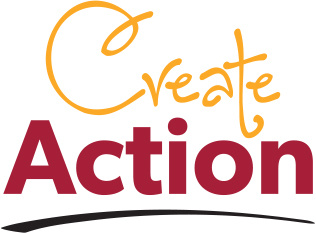
CCEDNet is excited to offer this learning series to increase capacity among our members for policy and advocacy work. The offerings listed were developed based on members’ responses to a survey completed in September and October 2020.
- Webinars are structured around presentations, followed by Q & A and some time for informal networking.
- Campfire chats provide opportunities for members to learn from one another’s experience in an informal peer-to-peer learning environment.
Note: Except for the first two webinars, which were open to all, this series is designed to strengthen the work of CCEDNet members! To join CCEDNet or to find out more about our barrier-free membership policy, click here.

| November |
Unblocking Social Innovation, Empowering Communities Key Policy Recommendations for Strengthening Community Economies |
| December |
Government Relations – Triumphs & Tragedies |
| January |
Advocacy 101 |
| February |
Exploring Common Ground and Working Together |
| March |
The Power of Partnerships in Your Campaign |
| April |
Building Effective Coalitions and Partnerships |
| May |
Using the Media – Easier Said than Done! |
| June |
Creating an Internal Advocacy Policy |
WEBINAR: Unblocking Social Innovation, Empowering Communities
November 2, 2020
Hear from social innovators about how social innovation and social finance (SISF) supports their work, why they’re pushing for action on SISF now, and how you can be part of a campaign that will help you have your voice heard on this strategic issue.
WEBINAR: Key Policy Recommendations for Strengthening Community Economies
November 19, 2020
Learn about CCEDNet’s current policy priorities, how they can accelerate economic recovery in a COVID and post-COVID world, and opportunities to get involved.
CAMPFIRE CHAT: Government Relations – Triumphs & Tragedies (No recording available for campfire chats.)
December 10, 2020
Have you had interactions with the government that were a resounding success? What about ones that went very, very badly? Join us to learn from others’ experiences and share your own lessons learned. If you’re a novice, no worries! The more the merrier.
WEBINAR: Policy & Advocacy 101
January 14, 2021
Whether we like it or not, we operate in a policy framework that can either help, or hinder, our work! Whether your work is at the local, provincial, or national level, join us to learn about public policy, how it works, and key components of an advocacy strategy.
CAMPFIRE CHAT: Exploring Common Ground and Working Together (No recording available for campfire chats.)
February 11, 2021
We are stronger when we work together! Explore the overlaps between your policy priorities and those of others, and figure out ways to complement each others’ efforts.
WEBINAR: The Power of Partnerships in Your Campaign
March 11, 2021
We can’t always do it alone and, in fact, our voice is louder when others join in! Finding a common agenda and building partnerships are key elements of an effective advocacy campaign. Join us to learn more!
CAMPFIRE CHAT: Building Effective Coalitions and Partnerships (No recording available for campfire chats.)
April 8, 2021
Everyone has a “bad partnership” horror story. On the flipside, effective coalitions take effort and a few critical ingredients. By sharing our experiences, we’ll help each other be better coalition partners, and maybe even share a few laughs!
CAMPFIRE CHAT: Working with the Media – Easier Said Than Done! (No recording available for campfire chats.)
May 6, 2021
The media is an important tool in advocacy work, but it can be tricky to figure out how to use it to your advantage! From figuring out who the right contacts are, to crafting your message, and identifying the right medium for your audience, there’s a lot to think about. Bring your questions and tap into others’ knowledge.
VIRTUAL WORKSHOP: Creating an Internal Advocacy Policy
June 3, 2021
There are some key questions for organizations to think about when starting to do advocacy work. From what issues we take positions on to who our spokespeople are, and lots more! Join us if you are new to advocacy, or if you’ve been doing it a while but without any real direction from your supervisor or board of directors.







 Ten days ago, Juan Tellez was charged with sedition, terrorism and crimes against public health in Bolivia.
Ten days ago, Juan Tellez was charged with sedition, terrorism and crimes against public health in Bolivia.  On July 28, the community economic development movement lost an elder.
On July 28, the community economic development movement lost an elder. On August 8, CCEDNet organized a meeting between members of the
On August 8, CCEDNet organized a meeting between members of the  At the last meeting of CCEDNet’s Board of Directors, Victor Beausoleil was selected as the new President of the Board. He takes over from Laurie Cook, who had been President since 2018.
At the last meeting of CCEDNet’s Board of Directors, Victor Beausoleil was selected as the new President of the Board. He takes over from Laurie Cook, who had been President since 2018.
